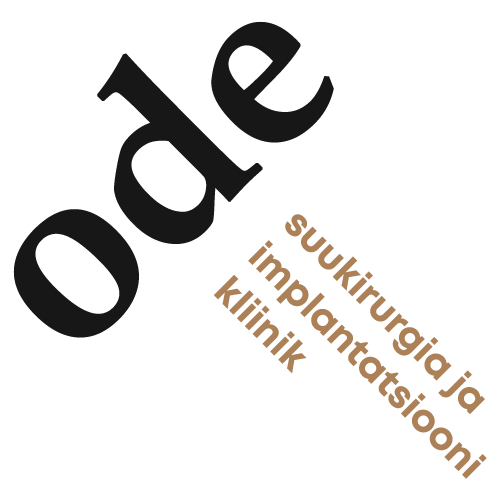Dental Crown
- Decalcification. Caries forming due to poor hygiene and inadequate eating habits. Maxillary lateral incisors and canines, mandibular premolars are damaged the most. Prevention: the patient’s choice (treatment cannot be started with poor hygiene), intensive hygiene education, diet. In severe cases stopping treatment and removing device is necessary.
- Wear. From the tooth’s contact with the brace. Most wear occurs with ceramic, then metal and composite braces.
- Fracture. In case of extensive fillings when removing braces and rings.
- Pulpitis. Dental nerve inflammation can sometimes be caused by too much orthodontic force, the risk is higher for teeth with prior trauma.
Periodontium or Tissue Supporting the Tooth
- Gingivitis or inflammation of soft tissue surrounding teeth. Bleeding, sometimes swelling, is characteristic. It is more common for rings as glued tubes.
- Periodontitis. Inflammation also affects hard tissues, bone loss occurs. Orthodontic treatment of patients with periodontitis should be coordinated with the patient’s hygienist or periodontist and include regular follow-up checks.
- Gingival recession or receding. Frequent in cases of setting mandibular incisors towards the lip.
- “Black triangles”. Disappearing of gingival papilla (triangle) between teeth.
- Root resorption. Some root shortening and rounding of the root tip accompany any orthodontic treatment. Most of the time, it is not felt or noticed and is clinically irrelevant. However, in some cases the root can shorten by 2/3. The orthodontist informs the patient individually about possible increased risk of root resorption. Regular X-ray checks are required for increased risk.
- Soft tissues. The orthodontist informs the patient about possible inconveniences, which are mostly short-term or passing. Friction can be reduced with brace wax if necessary.
- Ulcers from device (stinging arch, brace, etc.)
- Traumas from extraoral device (eye, skin, friction)
- Stability and shifting back. Most shifting back is caused by inadequate wearing of the retention device. The retention period is necessary, since reforming of tooth supporting tissues takes time, teeth position is affected by the pressure of surrounding soft tissues and continued growth can affect the outcome of the orthodontic treatment.
- Orthognathic surgery. The goal of surgical treatment is to correct the position of jaws in such a way that it is possible to achieve functional occlusion during treatment with braces. As a result of treatment, the appearance of the face also changes. Among the side effects of surgical treatment, possible changes in the sensitivity of facial skin are more important.
- Allergy. Nickel, latex, materials used in dental care (epoxy resin, disinfectants, etc.). The orthodontist should be informed of possible allergies and nickel free braces can be used if necessary.
- Changes in growth. Adverse changes in facial/jaw growth may occur during or after treatment. In this case, a re-evaluation of the treatment plan, a new orthodontic treatment after the end of the growth period, and orthognathic surgery to correct the position of jaws may be necessary.
Retainers
Retention plate – a plastic plate attached to the teeth with clamps. A retention plate is worn all the time for 6 months, then for 3 months at night and thereafter for 3 months overnight. Further retention regimen is determined by the orthodontist. The plate can be removed for eating, cleaning teeth and sports, if the device may be damaged.
Essix retainer – a thin transparent plastic splint that is comfortable to wear and does not show. An Essix retainer is worn all the time for 1 week (ex. for eating, cleaning) and thereafter at night for 1 year. The specific retention regimen is determined by the orthodontist.
Wire retainer glued to teeth – a long-term retainer is bent precisely according to the teeth and glued to the inner lingual surface of the teeth. A glued retainer does not shift from place and keeps the teeth in place at all times.
Retention is as important as treatment with braces. Not wearing proper retainers may lead to shifting back of the result achieved with brace treatment. Retention ensures a beautiful smile and functional occlusion for a long time.
Care
- Retainers should be maintained with care, as they are quite delicate. Retainers should not be placed in very hot or cold water as this can deform them. The patient should not fit or bend the retainer themselves. In case of losing the retainer or it breaking an orthodontist should be urgently consulted.
- A lost or broken retainer does not only incur additional costs, but also affects permanence of the treatment outcome. To achieve a beautiful smile and dental occlusion, cooperation between the doctor and the patient is important.
- If the retainer is not worn, ALWAYS keep it in a container. The retainer should be stored inside a damp napkin in a container, which prevents the device from drying (deforming).
- Clean the retainer once a day using a brush and water. If necessary, liquid soap, dishwashing detergent or special plastic (prosthetic) cleaning liquid can be used to break down dirt. A removable retainer should not be washed with toothpaste.
- The patient has to bring the retainer with them when coming to an appointment.’

